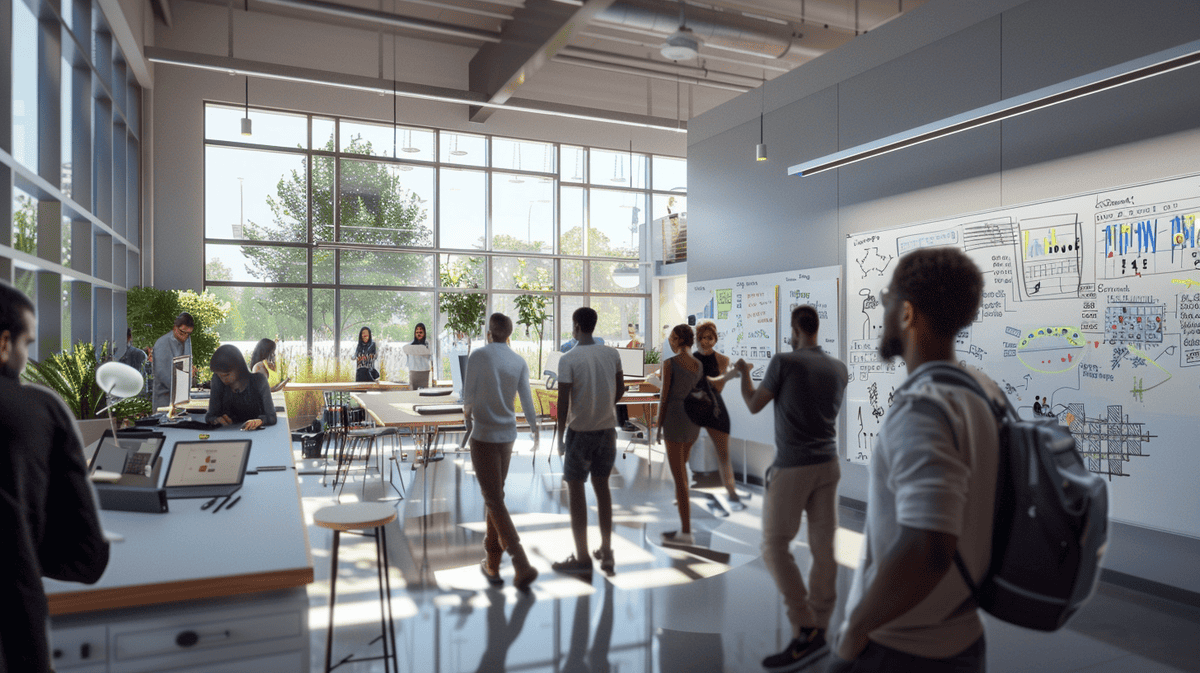Customer service problem solving is essential to business success. I’ve personally witnessed the impact solving problems effectively can have on customer experiences and loyalty. You’ll discover practical tips to quickly identify problems, diagnose root causes, and communicate with customers effectively. We’ll discuss de-escalation, problem solving frameworks, and how technology can help you deliver better service. So, without further ado, here are the core components of excellent customer service.
Customer Service Problem Solving Fundamentals

Customer service problem solving is perhaps the most important customer service skill. There are a few key skills you must master to become excellent at this skill. I’ve refined these skills over many years, and I’m excited to teach them to you.
Active listening is the most basic aspect of effective problem solving. You must pay undivided attention to the customer. Pay attention to what the customer says as well as their tone and body language. Don’t just listen to respond. Truly listen to what the customer is saying.
Empathy is closely related to active listening. If you were the customer, how would you feel? Putting yourself in the customer’s shoes will help you provide better solutions to their problems. This process alone has helped me increase customer satisfaction.
Critical thinking is another important skill for customer service representatives. Here are some sub skills of critical thinking:
- Analytical reasoning
- Problem spotting
- Solution creation
- Decision making
- Evaluating the solution
Lastly, effective communication skills bring all the pieces together. You need to communicate the solution to the customer in a way that makes sense to them. Use simple language, and avoid using any jargon. Then, double check that the customer understands the solution during the conversation.
That’s it. Master these skills, and you’ll become excellent at customer service problem solving. Just remember to practice these skills, and you’ll certainly notice improvement in your customer service conversations.
Identifying and Analyzing Customer Issues
Identifying problems quickly is a skill that will improve with practice. When a customer describes a problem to you, start by listening actively. Then, ask clarifying questions to fully understand the problem.
Root cause analysis is a concept borrowed from the world of engineering, and it’s equally relevant in customer service. Instead of addressing the symptoms, dig deeper to find the root cause of the problem. As you do, you’ll find that the solution you generate is more effective and longer lasting.
Categorizing customer problems allows you to streamline your problem-solving process. You might categorize problems by:
- Type of product
- Location of service
- Complexity of problem
- Urgency of the issue
When you begin to see patterns in customer problems, you know you’ve identified a systemic issue. Look for:
- Repeated problems across a specific set of products or services
- Systemic confusion about a policy or procedure
- Seasonal or monthly patterns
- Common problems among a specific set of customers
Customer feedback can help you improve how you solve problems. Customers likely provide feedback through surveys, reviews, and the customer support team. Use this information to identify what isn’t working in your approach to solving problems.
By doing this, I’ve found that problems are solved more quickly and efficiently. The customer appreciates a thorough and thoughtful solution to their problem.
Effective Communication Strategies for Customer Service Problem Solving
Communication is the foundation of solving customer service problems, and you’ll need to use various verbal and non-verbal communication. Your tone of voice, facial expressions, and body language all contribute to communicating a message.
Adjusting your communication style to the various customer personality types is essential. Some customers respond best to a businesslike, no-frills communication style, and others respond best to a more empathetic, conversational communication style. Learn to read customers and adjust your communication style appropriately.
Using positive language can often resolve conflicts. Instead of telling customers “I can’t do that,” reframe your communication to “Here’s what I can do.” This slight change in language can significantly shift a customer’s perception of the interaction.
Active listening ensures you accurately understand the customer’s issue. Use these active listening techniques:
- Paraphrasing back the customer’s issue
- Asking open ended questions
- Using verbal cues (e.g., “I see” “I understand”)
- Taking notes while the customer speaks
Clarifying and confirming the customer’s issues with them ensures you resolve the correct problem. Before moving on to the solution, paraphrase the customer’s issue back to them. This step prevents miscommunication and ultimately saves time.
Implementing these communication strategies has turned many negative customer interactions into positive ones. Apply each of these strategies consistently, and you’ll see a noticeable improvement in your problem solving ability.
De-escalation Techniques in Customer Service

Recognizing when a customer is becoming frustrated or angry is critical. Look for raised voices, rigid body language, or short answers. If you notice these signs, you can address the issue before it gets out of control.
Keeping your cool under pressure is something you’ll get better at over time. Take deep breaths and speak in a neutral tone. Remember, the customer’s anger is not directed at you personally. Instead, it’s usually a result of their frustration with the situation.
There are verbal de-escalation techniques you can use to calm the situation:
- Validate the customer’s emotions
- Use the customer’s name
- Speak slowly and calmly
- Provide a solution or alternative
- Avoid interrupting or arguing
Know when to bring in a supervisor or manager. If you don’t have any other solutions to offer or the customer insists on speaking to someone else, it’s time to escalate to the next level. Explain the situation to your supervisor before you transfer the call.
Always do a check-in after the de-escalation. Reach out to the customer to ensure they’re happy with the resolution. This extra step demonstrates that you care about the customer’s experience and can prevent future issues.
Problem-Solving Models for Customer Service
Problem-solving models offer a structured process to solve customer problems. The IDEAL model is an excellent problem-solving model for customer service. IDEAL stands for Identify, Define, Explore, Act and Look back.
The 8D problem solving process was originally developed by Ford Motor Company and can be applied to customer interactions. It focuses on team-based problem solving and preventing the problem from recurring.
While Six Sigma certification is traditionally used for manufacturing, you can use Six Sigma principles in customer service. The goal is to minimize defects and variation in your service to improve customer satisfaction.
Selecting the right problem-solving model depends on the situation. Here’s a quick cheat sheet:
| Situation | Solution |
|---|---|
| Simple, frequent customer issues | IDEAL model |
| Complex, recurring customer problems | 8D process |
| Process improvements | Six Sigma principles |
I’ve found these models to be helpful frameworks for addressing different customer service problems. Test different models to see what resonates most with your team and customers.
Training and Skill Development for Customer Service Problem Solving
Ongoing training is essential for customer service reps to keep their skills sharp and learn new problem solving strategies. Businesses that prioritize employee training see 24% higher profit margins and 218% higher revenue per employee (Association for Talent Development).
The most important skills to develop are active listening, empathy, critical thinking, and effective communication. These are the core skills of successful customer service problem solving.
Role playing is one of the best exercises to improve problem solving. Role play allows reps to practice handling challenging situations in a no pressure environment. I’ve seen a noticeable improvement in team performance by implementing regular role playing sessions.
Use customer feedback to inform specific skill development. Look for areas where customers consistently report a problem with the service, and then focus your training efforts there. This ensures you’re training the skills that will make the biggest impact.
It’s also important to measure the impact of training on problem solving skills. Track KPIs like CSAT (customer satisfaction scores) and FCR (first contact resolution) before and after your training sessions to show the efficacy of your training.
Leveraging Technology in Customer Service Problem Solving
CRM systems are a great resource for tracking and solving problems. They offer a centralized repository of customer interactions, making it easier to identify and solve recurring problems.
AI and chatbots can handle initial problem identification and triage, allowing human agents to focus on solving more advanced issues. However, make sure you have clear escalation paths if AI can’t solve the problem.
Knowledge bases and self-service options enable customers to solve their own basic problems, reducing the volume of customer support tickets and often resulting in faster problem resolution.
Data analytics help you identify trends and optimize your problem-solving process. Analyze customer complaints and how long it takes you to solve each one, and use this data to iterate and predict future problems.
Omnichannel support ensures problems are resolved seamlessly across any platform. Customers should be able to start a conversation on one channel and pick it up on another without losing any context. This solution improves both satisfaction and efficiency.
Measuring and Improving Customer Service Problem-Solving Effectiveness

Key performance indicators (KPIs) of customer service problem solving:
- First Contact Resolution Rate
- Average Handle Time
- Customer Satisfaction Score (CSAT)
- Net Promoter Score (NPS)
Customer satisfaction surveys are the most direct KPI of your problem solving ability. You should use a mix of quantitative and qualitative questions to get a holistic view of the customer experience.
If you look at first contact resolution rates, you can identify the problem areas early. If this rate is low, then your agents likely need more training or better access to information.
You should continually optimize customer service problem solving. So, you should regularly evaluate your processes and look for opportunities to make them more efficient or effective. Additionally, ask your team for feedback on what’s working and what isn’t.
Another way to measure your performance in solving customer service problems is to benchmark yourself against best-in-class benchmarks and competitors. Thus, you can accurately set goals for improvement and track them over time.
Keep in mind that optimizing customer service problem solving is an iterative process. So, commit to constantly learning and adjusting, and you’ll be able to optimize customer satisfaction and loyalty. Continuous improvement is key in customer service, just as it is in other areas of business.
Closing Remarks
Customer service problem solving is one of the most important customer service skills as it directly affects customer satisfaction and the success of the business. If you become an expert at active listening, empathy, and communication, you’ll be prepared to handle any customer problem.
Just don’t forget that continuous training and using technology is essential to stay ahead. As you use these strategies, you’ll notice higher resolution rates and happier customers. Continually refine your strategy and track the results. With time, you’ll have loyal customers and a more profitable business.






